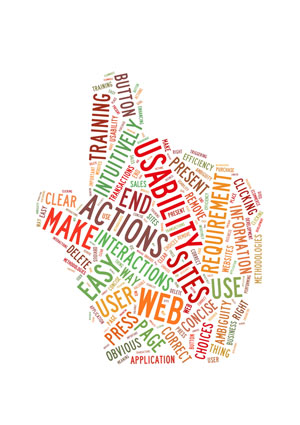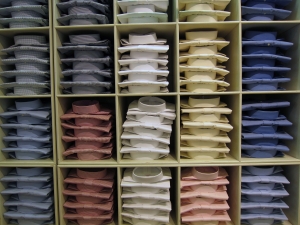
Remember that corporate website you visited yesterday? You know – the one that was very light on content? Or how about the site you looked at the day before? You must remember that – there was lots of stuff on that site, although admittedly it wasn’t very engaging, was it?
No? You don’t remember either of them. Well I’m not surprised…
The above scenarios may be imaginary, but the context isn’t that far away from reality. Let’s be frank about this. A website with low levels of content or content that just isn’t very good isn’t going to encourage visitors to stay around, let alone remember what the site was trying to say. And this kind of visitor response is of course extremely bad news if you’re trying to tell your corporate story and engage with key stakeholders.
So it’s no surprise that companies are spending more in the quest for quality content that’s engaging, memorable, and, perhaps most important of all, good enough to share on social media. The extra spending required to source good content has to be justified however, just like any other form of corporate expense.
At Corporate Eye, we’ve investigated how different types of content can deliver surprisingly different returns on investment or, as we like to call it: “Content RoI”. Now, a blog post isn’t the best way to go into much detail on how we measure “Content RoI”, but here are some key success indicators to look out for.
If the web content on your site…
- Creates an emotional connection with a site visitor
- Encourages sharing to social media
- And sends out clear engaging messages about your company
…then you’re definitely on the right track.
It’s also important to remember that different types of content can deliver varying returns.
Text can engage and entertain (and I have to say that as the writer of this blog post), but even the best prose can appear a little flat on its own. Combine text with the right kind of visual content however, and this can increase a visitor’s willingness to read by 80%.
It’s also important to note that visual content doesn’t have to be well chosen quality images of the company team, products and services – we’re big fans of using engaging infographic content on web pages, because it’s a great way of grabbing a visitor’s attention and sharing key facts and figures fast. If a web page includes well-chosen quality images or inventive infographics, adding visuals of any type is a sure-fire way to aid content memorability, as we typically remember 80% of what we see, compared to only 20% of what we read.
The king of visual content is unquestionably moving pictures, and that’s no surprise when a whopping 60% of us say we prefer watching video to reading text online. Video can engage a view in a way that can leave even the best text and infographics far behind, and it can do it incredibly quickly.
If a website can include video of the right quality, and also locate it in the right place (in the site structure), video content can successfully…
- Reduce bounce rate
- Increase time-on-site
- And increase recall.
Another great thing about video is that it can be used to tell different stories in different ways. Short interview clips with everyone from the company CEO to front-line staff can quickly get across key messages, ranging from strategy and attitudes to risk, right through to what it’s like to work for the company. Alternatively, videos that tell stories can be used to share everything from what a company does, to corporate values and social responsibility case studies.
Whatever the format of online video content, the rules of “Content RoI” still apply.
If the video content…
- Creates an emotional connection with a site visitor
- Encourages sharing to social media
- And sends out clear engaging messages about your company
…it’s passed the return on investment test with flying colours.
If you’d like to see a great example of how video content can make a fantastic emotional connection with the online visitor, and lead to multiple sharing, then check out Corning’s three videos revolving around their “A Day Made of Glass” theme. These are videos that demand to be seen, and at the time of their release, demanded to be shared too, with over 21 million views on YouTube alone.
The Day of Glass videos are also great examples of custom-made content. And creating content of this standard does require investment, although the potential return, if that content leads to a sharing chain reaction, surely justifies the spending required.
So, the key to effective content is a possibly expensive custom-made video, yes?
Well, no, not necessarily – It’s also possible to create great video content, by using existing corporate video material that shares key messages or common themes. With some clever post-production and creative guidance, we’ve helped some of our clients use video they already have, and turn it into new content that is engaging, memorable and just asking to be shared.
If you’d like to talk to us about getting a better return on your web content, or how you can use visuals and video to connect with key stakeholders, why not drop us a line and we’ll be happy to share our knowledge.
 Based on an analysis of billions of online conversations, social media intelligence company Infegy ranked 800 brands to determine which were the
Based on an analysis of billions of online conversations, social media intelligence company Infegy ranked 800 brands to determine which were the  If your website is causing your staff to have to work around it, or perhaps even duplicate the work of the website, then it is time to review the site’s design and functionality.
If your website is causing your staff to have to work around it, or perhaps even duplicate the work of the website, then it is time to review the site’s design and functionality.  Brand Keys has released its annual ranking of the
Brand Keys has released its annual ranking of the  The world’s most innovative company in 2015 might surprise you. According to Forbes’ annual ranking, the most innovative company today isn’t Apple (which ranked second on the list), and it’s not Google (which ranked fourth). It’s not Facebook or Twitter (neither company ranked in the list of the 50 most innovative companies, although Facebook’s Instagram did rank in fifth place).
The world’s most innovative company in 2015 might surprise you. According to Forbes’ annual ranking, the most innovative company today isn’t Apple (which ranked second on the list), and it’s not Google (which ranked fourth). It’s not Facebook or Twitter (neither company ranked in the list of the 50 most innovative companies, although Facebook’s Instagram did rank in fifth place).